What Is Effective Radiated Power? Understanding ERP Calculations for Canadian Ham Radio Operators
Amateur radio operators in Canada need to understand some key technical concepts, including power measurements. Effective Radiated Power (ERP) is a critical measurement that determines the strength of your radio signal as it travels through space. ERP represents the total power in watts that a half-wave dipole antenna would have to be radiated to give the same radiation intensity at a receiving location compared to your actual antenna system.
Canadian regulations specifically limit the maximum ERP for amateur operators in certain frequency bands. For example, when operating in the 5 MHz band, you must ensure your station doesn't exceed 100 W PEP (Peak Envelope Power) as your ERP. Understanding how to calculate ERP helps you comply with these regulations while optimizing signal coverage.
Key Takeaways
- ERP calculations combine transmitter output power with antenna gain to determine your actual signal strength in a specific direction.
- Canadian amateur radio regulations specify maximum ERP limits that vary depending on which frequency band you're operating in.
- Calculating and adjusting your ERP properly helps ensure regulatory compliance while maximizing your communication effectiveness.
Understanding the Basics of Radio Waves
Radio waves are invisible electromagnetic waves that travel through the air, carrying information from one place to another. They're all around you right now!
These waves have two key properties you should know about: frequency and wavelength. Frequency is measured in Hertz (Hz) and tells you how many wave cycles occur each second. Wavelength is the distance between wave peaks.
When you transmit with your amateur radio, you create radio waves that propagate outward from your antenna. The higher the frequency, the shorter the wavelength—it's a seesaw relationship.
Radio waves travel at the speed of light (about 300,000 kilometres per second). This incredible speed is why you can instantly communicate with someone on the other side of your city or province!
Different frequency bands behave differently. For example:
- HF (3-30 MHz): Can bounce off the ionosphere for long-distance communication
- VHF (30-300 MHz): More line-of-sight but can still travel decent distances
- UHF (300-3000 MHz): Primarily line-of-sight communication
The Effective Radiated Power (ERP) of your transmission affects how far these waves can travel. ERP takes into account both your transmitter power and your antenna's gain.
Understanding these basics helps you make better decisions about your equipment setup and operating frequencies. It's essential knowledge for any Canadian amateur radio operator!
Defining Effective Radiated Power (ERP)
ERP measures the power emitted from your antenna system, accounting for losses and gains in the complete transmission chain. Understanding this concept helps you properly configure your amateur radio station and comply with Canadian regulations.
Calculation of ERP
To calculate ERP, you must consider three key elements: your transmitter output power, transmission line losses, and antenna gain. The formula is quite straightforward: ERP = Transmitter Power - Line Losses + Antenna Gain (all expressed in dB).
For example, if your transmitter outputs 50 watts (17 dBW), your coaxial cable causes a 2 dB loss, and your antenna has a gain of 6 dBd (relative to a dipole), your ERP would be 17 - 2 + 6 = 21 dBW or about 125 watts. This measurement considers the antenna's gain relative to a standard dipole.
Line losses can be significant at higher frequencies, so proper coax selection becomes increasingly important for VHF and UHF operations.
ERP Versus Transmitted Power
Your transmitter's output power and your station's ERP are often different values. While your radio might output 100 watts, your actual ERP may be higher or lower depending on your antenna system.
With a high-gain antenna, your ERP can significantly exceed your transmitter power. This is why Canadian regulations often specify ERP limits rather than transmitter power limits - they're concerned with the actual signal strength in the environment.
When using directional antennas, remember that ERP applies in the direction of maximum radiation. Your signal strength will be lower in other directions, which can be advantageous for reducing interference.
Understanding ERP helps you make better equipment choices. For example, you might achieve better results by investing in a quality antenna with higher gain rather than a more powerful transmitter.
The Significance of ERP to Amateur Radio Operators
Effective Radiated Power (ERP) is fundamental to your success as a ham radio operator in Canada. It affects how far your signal travels and determines whether you operate within legal parameters.
Antenna Gain Impact on ERP
When you connect your transmitter to an antenna, magic happens! Your antenna's gain directly influences your Effective Radiated Power. If you use a basic dipole with 0 dBd gain and your transmitter outputs 100 watts, your ERP equals 100 watts.
But here's where it gets interesting - use an antenna with 3 dBd gain, and suddenly your ERP jumps to 200 watts! That's double the effective power without changing your transmitter.
The formula is straightforward: ERP = Transmitter Power × Antenna Gain. You also need to account for feedline losses. Every dB of loss in your coaxial cable reduces your ERP.
For example:
- 100W transmitter + 6 dBd gain antenna - 2 dB coax loss = 400W × 0.63 = 252W ERP
This matters because every 3 dB gain effectively doubles your radiated power!
Maximizing Communication Range
Your ERP directly impacts how far your signal travels. Higher ERP means better chances of making those exciting DX contacts you're after!
Remember that doubling your ERP doesn't double your range - radio waves follow the inverse square law. You need to quadruple your ERP to double your theoretical communication distance.
Smart hams focus on antenna gain rather than just pumping more power. A modest 50W transmitter with an excellent antenna system can outperform a 1500W station with a poor antenna.
Consider these practical tips:
- Mount antennas higher for better line-of-sight
- Use directional antennas to focus power where needed
- Keep feedlines short to minimize losses
- Use quality coax with lower loss ratings
Each decision affects the actual power radiated from your station.
Compliance with Industry Canada Regulations
You must understand ERP for legal operation. Industry Canada sets strict limits on maximum ERP for different amateur bands and license classes.
These limits aren't arbitrary - they prevent interference with other services and ensure fair access to the spectrum for all hams.
The 2025 Canadian Basic Amateur Radio Question Bank includes specific questions about ERP calculations, highlighting its importance for certification.
Exceeding ERP limits can result in:
- Monetary penalties
- License suspension
- Equipment confiscation
Calculate your ERP before making antenna improvements or power upgrades. If you're not careful, simple adjustments like using a more efficient antenna can inadvertently push you over legal limits.
Always document your station's ERP calculations - this demonstrates responsible operation if questions arise about your setup.
The Role of ERP in System Design
Effective Radiation Power (ERP) is a cornerstone concept in amateur radio system design. It helps determine how far your signal will travel and how effectively you'll communicate with other operators.
Selecting Antennas and Equipment
Understanding ERP helps you make smarter equipment choices when designing your amateur radio station. ERP measures the combination of your transmitter's power and your antenna's ability to direct that power in a specific direction.
For example, if you're operating with limited transmitter power, you can compensate by selecting an antenna with ha igher gain. A high-gain directional antenna might allow you to achieve the same ERP as a more powerful transmitter paired with a simple dipole.
Remember that ERP calculation is straightforward: transmitter output power + antenna gain - system losses. This formula helps you budget your equipment purchases effectively, maximizing performance while staying within Industry Canada regulations.
Predicting System Performance
ERP directly impacts your amateur radio station's performance in real-world conditions. By calculating your system's ERP beforehand, you can predict signal coverage and make adjustments before finalizing your setup.
Engineers and hobbyists alike use ERP to optimize signal strength and coverage area. If you're planning a fixed station, ERP calculations help determine if you'll reach your desired operating range.
Canadian regulations specify maximum ERP limits for different frequency bands and license classes. Staying within these limits ensures legal operation while preventing unnecessary interference with other services.
Testing different equipment combinations on paper using ERP calculations saves time and money. Before making purchases, you can predict if adding a better antenna or reducing cable losses will meaningfully improve your station's performance.
Regulatory Aspects of ERP in Canada
In Canada, radio operators must adhere to specific regulations regarding Effective Radiated Power (ERP). These regulations are designed to prevent interference and ensure safe operation while balancing the needs of amateur radio enthusiasts.
Understanding Safety Code 6
Safety Code 6 is Health Canada's guideline for limiting RF field exposure. As an amateur radio operator, you must understand how your station's ERP affects compliance with these safety standards.
When you calculate your station's ERP, you determine the power being radiated from your antenna system. This helps ensure you operate within Safety Code 6 limits for radio frequency exposure.
Higher ERP values mean greater potential for RF exposure to yourself and others nearby. When running higher power, you should always position antennas to minimize exposure risk to the public and ensure adequate distance from living spaces.
Basic precautions and proper antenna placement are sufficient for most home stations to meet Safety Code 6 requirements.
Frequency Allocations and Power Restrictions
In Canada, different amateur radio bands have varying ERP restrictions. Innovation, Science, and Economic Development Canada (ISED) sets these limits.
Your licence class determines the maximum power you can use. Basic licensees are typically restricted to lower ERP limits than Advanced licensees. For example:
Power Limits by Licence Class:
- Basic: Generally limited to 250 watts PEP (Peak Envelope Power)
- Basic with Honours: Higher power allowances in certain bands
- Advanced: Access to maximum legal power limits
Band-specific ERP restrictions exist to manage interference with other services. Due to their propagation characteristics and shared use, VHF/UHF bands often have stricter ERP limits than HF bands.
When operating portable or mobile, you should know that different ERP calculations may apply based on your antenna configuration and environmental factors.
Practical Application of ERP Knowledge
Understanding Effective Radiated Power has tangible benefits for amateur radio operators in Canada. This knowledge allows you to maximize your station's performance while remaining within regulatory limits.
Enhancing Operator Efficiency
When you know how to calculate and adjust your ERP, you can make smarter decisions about your equipment setup. If you operate with power limitations, you can increase your effective signal by using a higher-gain antenna rather than increasing transmitter power.
This approach helps you conserve energy, reduce equipment strain, and reduce costs. For example, a 50-watt transmitter with a 6 dBd gain antenna can produce the same ERP as a 200-watt transmitter with a basic dipole.
During contests or emergency operations, you can quickly adjust your setup to reach specific areas by understanding how antenna height, gain, and transmitter power affect your ERP.
Troubleshooting and Optimizing Transmissions
When your signal isn't reaching the intended recipients, ERP knowledge becomes invaluable for troubleshooting. You can systematically analyze each component affecting your ERP calculation to identify weak points.
Is your feedline creating excessive loss? Is your antenna gain lower than expected? By measuring actual system performance against theoretical ERP, you can pinpoint issues.
Optimizing your station becomes methodical when you understand ERP. You might discover that:
- Replacing coaxial cable offers better improvement than increasing power
- Raising antenna height provides more benefits than buying an amplifier
- Using directional antennas targets your signal where needed most
This knowledge helps you make cost-effective improvements rather than unnecessarily spending on higher-power amplifiers when the real issue might be feedline loss or antenna inefficiency.







